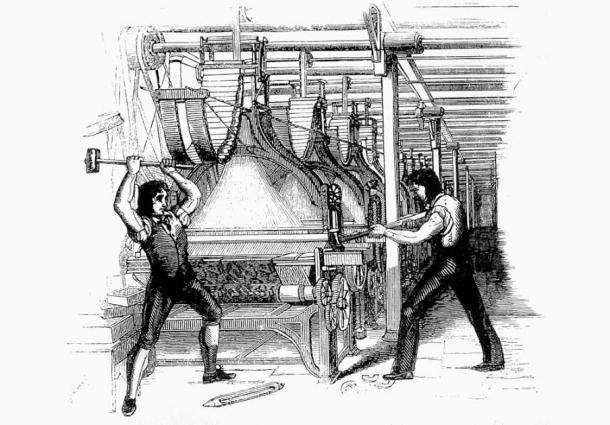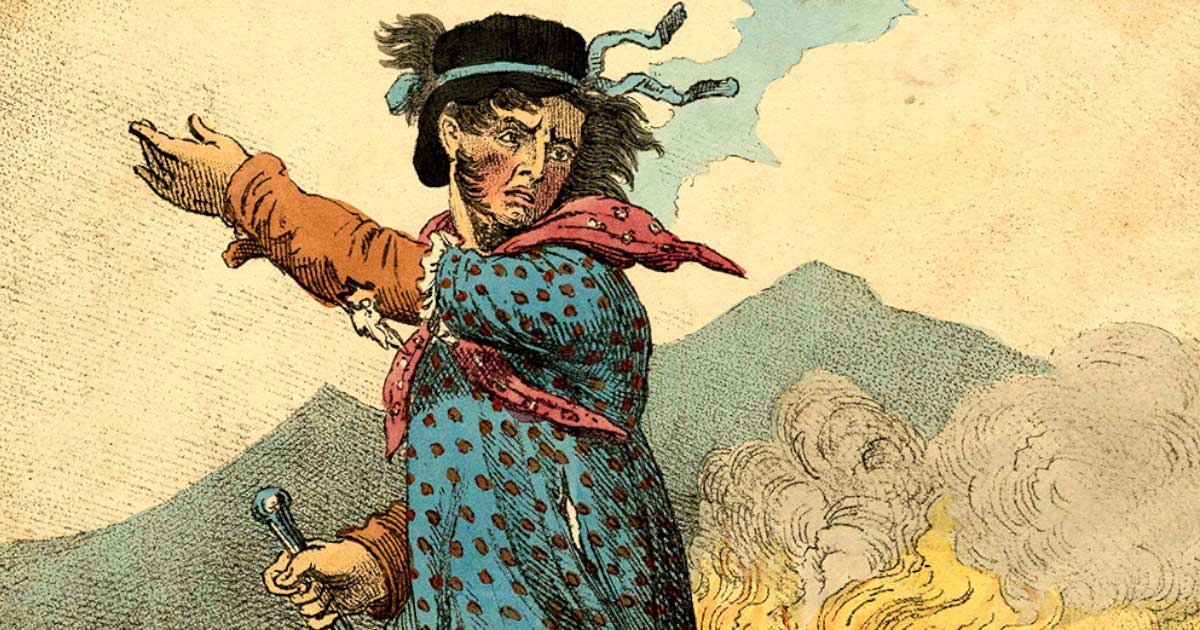Calling Someone a Luddite Isn't Actually an Insult
Historically Luddites have gotten a bad wrap since the use of the word exploded as a belittling term for clumsy “Neanderthal technophobes” in the 1960s. Unfortunately for the Luddites, the way its used today is a misrepresentation, downplaying their legacy as one of the precursors to trade unionism. So, who were they really? Well, it seems that Robin Hood wasn’t the only heroic outlaw based out of Sherwood Forest.
The Luddites were an organized group of weavers-turned-guerilla activists in Nottingham, who took the name of a (probably) fictional character known as King Ludd, with a supposed base camp in Sherwood Forest. While there is no evidence for his existence, some historians believe he was actually Ned Ludd, a weaver who apparently destroyed a stocking frame back in 1779 after he was punished for idleness.
The Luddites burst into public consciousness between 1811 and 1813, a time of exacerbated poverty, with England’s funds drained by the Napoleonic Wars. Meanwhile, technological advances such as automated looms reduced dependence on skilled labor. The stocking frame knitting machine had been invented by William Lee in 1589. Queen Elizabeth I denied him a patent, fearing its impact on hand knitters. “Consider thou what the invention could do to my poor subjects,” she decried. “It would assuredly bring to them ruin by depriving them of employment, thus making them beggars.”
In the early 1800s, wages were down and unemployment was rife, plunging the Midlands, the center of textile production in England, into poverty. Workers demanded better wages in Nottingham in March 1811 and some broke into a textile factory. The trend spread with revolting workers wanting to ban textile machinery and protect workers.

Frame-breakers, also known as Luddites, smashing an automated loom. As a result of their actions, the Frame-Breaking Act of 1812 made frame-breaking a criminal offence carrying the death penalty. (Public domain)
Experts at public relations, the Luddites used effective tactics, including tongue-in-cheek public petitions signed by “Ned Lud’s Office, Sherwood Forest” or threatening letters to employees who mistreated workers with demands that machinery be removed: “Sir if you do not pull don the Frames… my Companey will visit yr machines for execution against you.” They even dressed up in women’s clothes, calling themselves “General Ludd’s wives.” When the British Prime Minister was murdered in 1812, Luddites claimed credit and threatened factory owners with the same fate, even though they were not responsible.
In the aftermath of the French Revolution (1789 to 1799), the ruling classes were fearful of insurrection and their reaction was brutal. The Frame-Breaking Act of February 1812 made the destruction of textile technology punishable with the death penalty and more troops were deployed to quash the Luddites than to help Wellington fight Napoleon. Up to 70 Luddites were executed and dozens were deported to Australia. By 1813, the Luddites had all but disappeared, a cautionary tale to workers resisting capitalism.
“The Luddites weren't technophobes... They were labor strategists,” explained Vice. While they ultimately failed, they did draw attention to their plight. While whitewashing warped the meaning of their cause, Scientific American highlighted that “some Luddism is important for society” to scrutinize technology and put humane values above all.
Top image: King Ludd, the leader of the Luddites. Source: Public domain
By Cecilia Bogaard



















